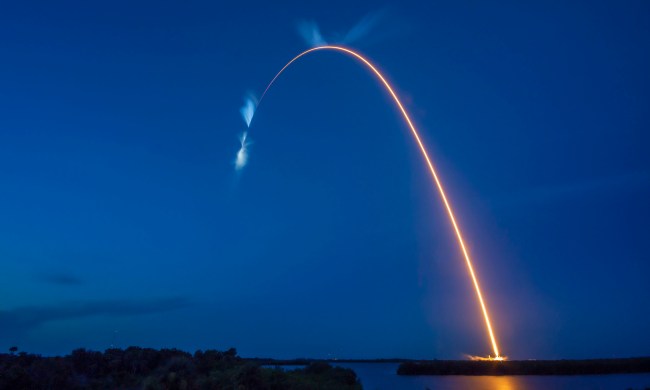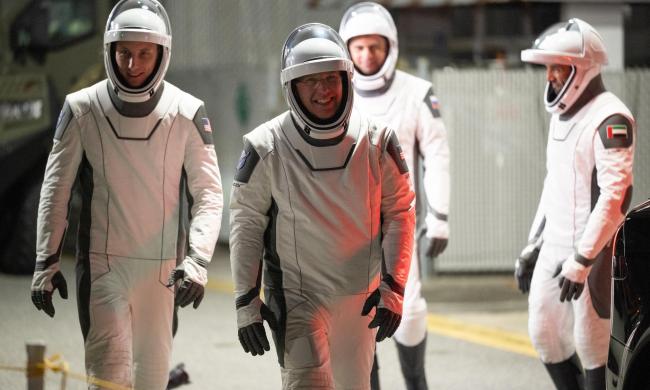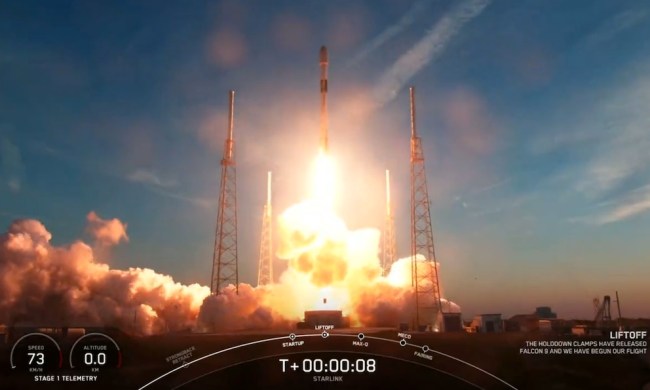Space News
About
Explore Space News

How to watch the SpaceX resupply launch to the ISS this week
This week, a SpaceX Cargo Dragon will blast off from Florida carrying scientific equipment and supplies to the International Space Station. Here's how to watch.







NASA confirms success of Artemis I moon mission
NASA confirms success of Artemis I moon mission
NASA is clearly feeling positive about the prospects for the Artemis II lunar flight and its plan to launch the crewed mission next year.

Japan’s space agency destroys own rocket just after launch
Japan’s space agency destroys own rocket just after launch
Japan's space agency had to bring to an abrupt end the first flight of its newest rocket after it developed a fault shortly after launch on Tuesday.

Stunning space station video shows glorious aurora over Earth
Stunning space station video shows glorious aurora over Earth
NASA has released a breathtaking time-lapse video captured from the International Space Station showing a recent aurora over Earth.

Hubble captures a cosmic sea monster with this image of a jellyfish galaxy
Hubble captures a cosmic sea monster with this image of a jellyfish galaxy
This Hubble image shows a jellyfish galaxy, a galaxy type named for its larger main body with tendrils that float along after it like the sea creature.

Researchers design a ‘space salad’ to keep astronauts healthy and happy
Researchers design a ‘space salad’ to keep astronauts healthy and happy
Researchers have come up with an astronaut salad, that meets the nutritional needs of astronauts and features foods that could be grown in space.

Roman Space Telescope will survey the sky 1,000 times faster than Hubble
Roman Space Telescope will survey the sky 1,000 times faster than Hubble
The Nancy Grace Roman Space Telescope, set to launch in 2027, will look at vast areas of space to help cosmologists understand the universe on a large scale.

Faulty nozzle caused the loss of European Vega-C rocket last year
Faulty nozzle caused the loss of European Vega-C rocket last year
Last year, Europe's Vega-C rocket failed on its second mission. Now, a commission had found that the problem was due to a faulty engine part.

James Webb captures an extremely distant triple-lensed supernova
James Webb captures an extremely distant triple-lensed supernova
Webb imaged a huge galaxy cluster located 3.2 billion light-years away, which is acting like a magnifying glass and showing a far-off supernova in triplicate.

Satellites like SpaceX’s Starlink are disrupting Hubble observations
Satellites like SpaceX’s Starlink are disrupting Hubble observations
Only a few Hubble observations are affected for now, but the problem is going to get much, much worse.

Rovers could explore lava tubes on Mars or the moon using breadcrumbs
Rovers could explore lava tubes on Mars or the moon using breadcrumbs
Engineers propose using robots to scout out lava tubes for use as human habitats with a method inspired by Hansel and Gretel.

Telescope captures the remnants of a supernova first seen 2,000 years ago
Telescope captures the remnants of a supernova first seen 2,000 years ago
Astronomers recently captured a remnant called RCW 86, which is the result of a supernova which was observed by Chinese astronomers in the year 185 C.E.

Hubble sees the dramatic collision of NASA’s DART spacecraft and an asteroid
Hubble sees the dramatic collision of NASA’s DART spacecraft and an asteroid
NASA says the test has shown it is possible to deflect an asteroid if one were threatening Earth -- but only if it is spotted in time.

Venus, Jupiter, and Ceres feature in NASA’s skywatching tips for March
Venus, Jupiter, and Ceres feature in NASA’s skywatching tips for March
NASA is back again with its monthly roundup of skywatching tips. This month's highlights feature several planets and a gorgeous crescent moon.

SpaceX Crew-6 astronauts arrive safely at space station
SpaceX Crew-6 astronauts arrive safely at space station
SpaceX's four Crew-6 members have safely boarded the International Space Station following a voyage that lasted about 27 hours.

NASA eyes weather for Thursday’s Crew-6 launch. Here’s how it’s looking
NASA eyes weather for Thursday’s Crew-6 launch. Here’s how it’s looking
NASA is aiming to launch four more astronauts to the space station early on Thursday, but it needs good weather for lift off.

Astronaut captures ‘unreal’ aurora image from space station
Astronaut captures ‘unreal’ aurora image from space station
A geomagnetic storm has brought spectacular auroras to parts of Earth in recent days. And to astronauts on the space station, too.

SpaceX deploys first batch of more powerful Starlink satellites
SpaceX deploys first batch of more powerful Starlink satellites
SpaceX chief Elon Musk on Tuesday confirmed the successful deployment of the company's first batch of next-generation Starlink internet satellites.

NASA and SpaceX target new Crew-6 launch date after scrubbed effort
NASA and SpaceX target new Crew-6 launch date after scrubbed effort
After NASA and SpaceX scrubbed the Crew-6 launch just a couple of minutes before lift-off on Monday, officials are now targeting Thursday for the next attempt.

Scientists find a solid metallic ball within the Earth’s core
Scientists find a solid metallic ball within the Earth’s core
The innermost inner core of the planet is thought to be a solid metallic ball around 400 miles across, according to seismologists.

NASA and SpaceX Crew-6 mission ready for launch tonight
NASA and SpaceX Crew-6 mission ready for launch tonight
NASA is ready to launch four astronauts to the International Space Station, with preparations underway and launch scheduled for late tonight.

An enormous galaxy cluster warps spacetime in this Hubble image
An enormous galaxy cluster warps spacetime in this Hubble image
Much of the universe is too far away for even powerful telescopes to observe -- so researchers make use of a natural occurrence called gravitational lensing.

New Russian Soyuz craft arrives at space station to replace leaky one
New Russian Soyuz craft arrives at space station to replace leaky one
A Russian Soyuz spacecraft has docked at the International Space Station, ready to carry astronauts as a replacement for another Soyuz that leaked last year.













